| Instrument: Nuclear Magnetic Resonance (NMR) Brand / Model: JEOL ECX-400 | |||
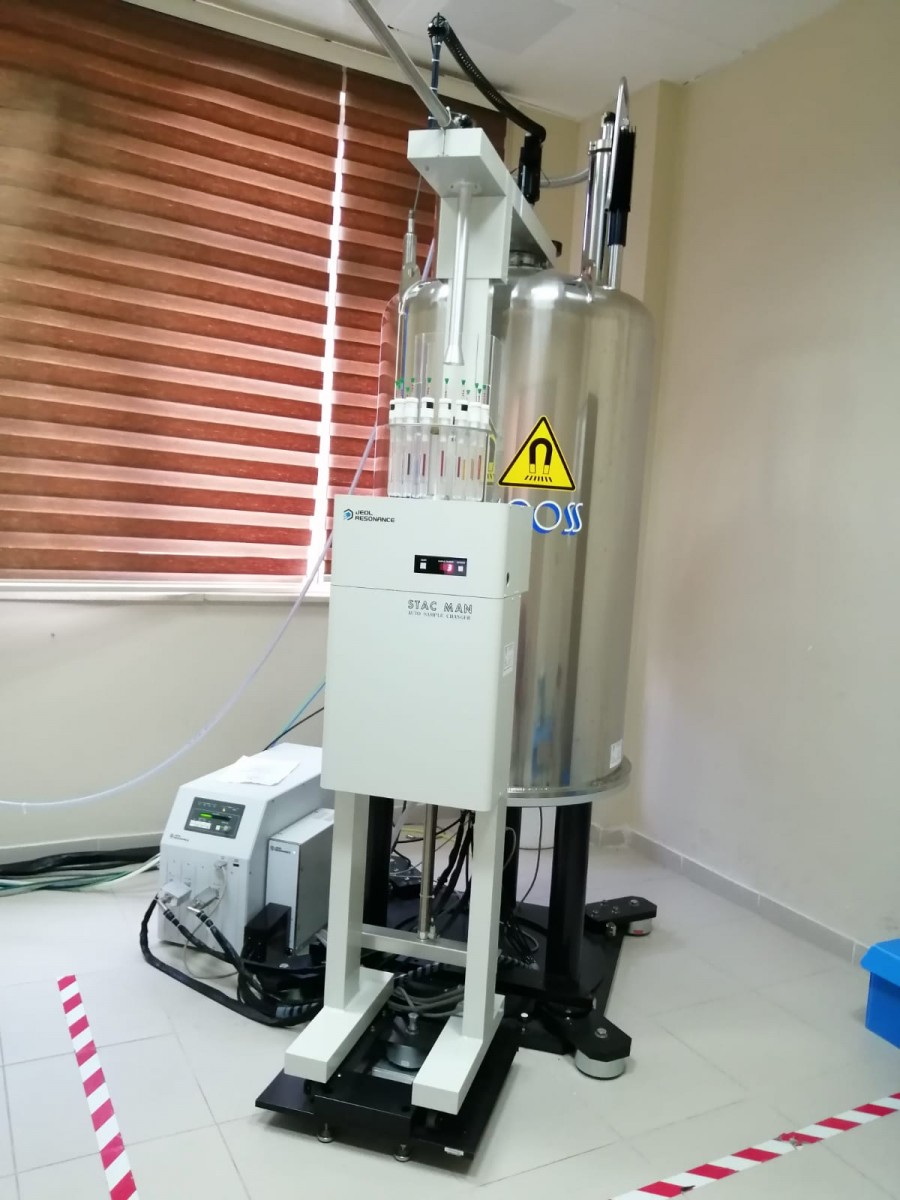 |
Working Principle: NMR is based on the resonance of a nucleus with a nonzero quantum spin number within an external magnetic field when exposed to a radiofrequency photon at the appropriate frequency. |
||
| Applications: NMR can provide information about the compound's structural shape, bonding characteristics, molecular formula and weight, molecular motions, and the structural arrangement of polymers. Sample Acceptance Conditions: Samples should be submitted with their specified solvents. For 13C, a minimum of 40 - 50 mg of the sample is required, while for H, a minimum of 10-20 mg of the sample is necessary. |
|||
| Instrument: RAMAN Brand / Model: WITEC ALPHA 300RA | |||
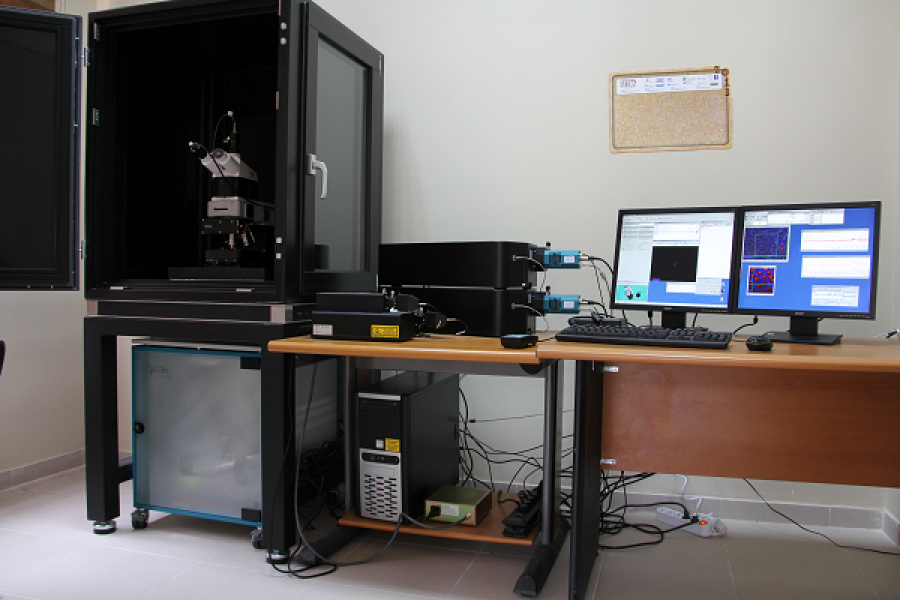 |
Working Principle:
Raman spectroscopy operates based on the method of scattering light inelastically by the bonds within a molecule. Microscopic imaging allows both the visualization of the sample surface and point and area analysis from the desired surface area. Additionally, our Raman system enables three-dimensional area mapping. It is also equipped for complementary work with Atomic Force Microscopy. Laser Wavelength: 532 nm |
||
| Applications: Raman spectrometers and microscopes can be used in a wide range of scientific fields, including basic sciences, pharmacy, medicine, and various engineering disciplines. Sample Acceptance Conditions: - |
|||
| Instrument: X-Ray Diffraction (XRD) Brand / Model: PANalytical Empyrean | |||
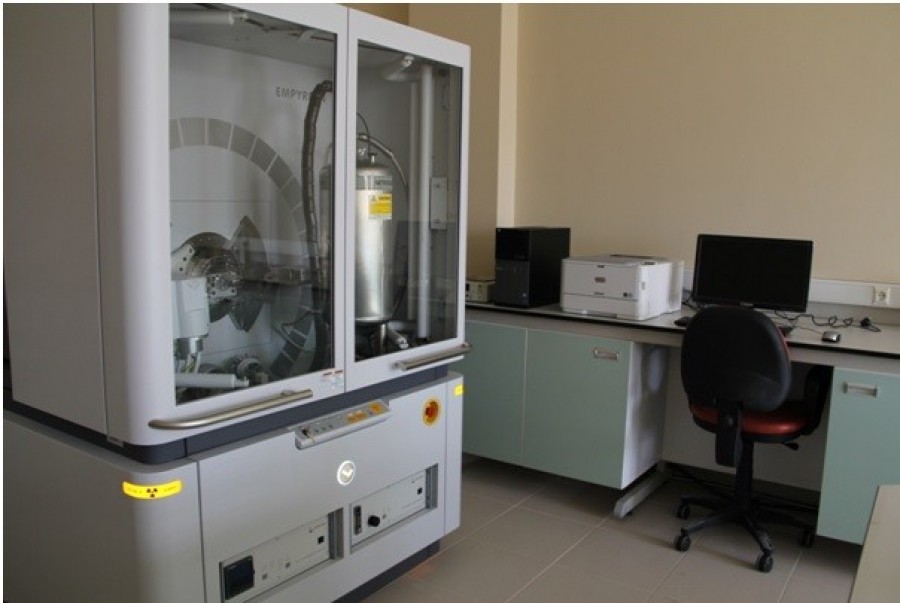 |
Working Principle: X-Ray Diffraction (XRD) is based on the principle of X-rays being scattered in a characteristic pattern by the atomic arrangements specific to each crystal phase. These diffraction profiles, like fingerprints, define each crystal phase. The X-Ray Diffraction analysis method does not destroy the sample during analysis and allows the analysis of very small quantities of samples (liquid, powder, crystal, and thin film). X-Ray Diffraction equipment can be used for qualitative and quantitative examinations of clays, rocks, crystalline materials, thin films, oils, and polymers. |
||
| Applications: X-Ray Diffraction equipment can be used for qualitative and quantitative examinations of rocks, crystalline materials, thin films, and polymers. Sample Acceptance Conditions: For thin films, a sample size of 1cmx1cm is required, and for powder samples, a minimum of 0.1 grams of the sample should be provided. |
|||
| Instrument: BET Surface Area Analysis Brand / Model: Quantachrome Quadrasorb SI | |||
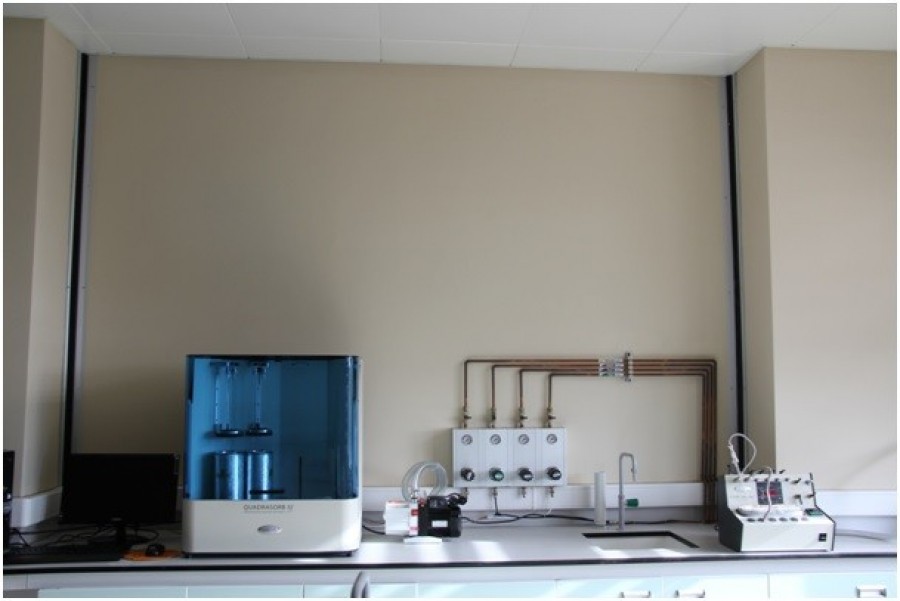 |
Working Principle:
This device performs surface area and porosity measurements based on the physical adsorption technique with nitrogen (N2) gas at 77K using the Brunauer, Emmet, and Teller (BET) method. Isotherms are obtained in the range of 0.01 – 0.9 P/P0. The analysis results provide both single-point and multi-point BET surface area, total pore volume, and BJH pore size distribution values. |
||
| Applications: The BET device can analyze samples from ceramics, adsorbents, activated carbon, catalysts, paint and coating products, implants, geological samples, and samples from the electronic and cosmetic industries. Sample Acceptance Conditions: A minimum of 0.12 grams of the sample is required. Any acidic or similar chemicals present in the sample should be mentioned as they may potentially damage the device. |
|||
| Instrument: Thermal Gravimetric Analysis Device TGA Brand / Model: Perkin ELMER TGA 8000 | |||
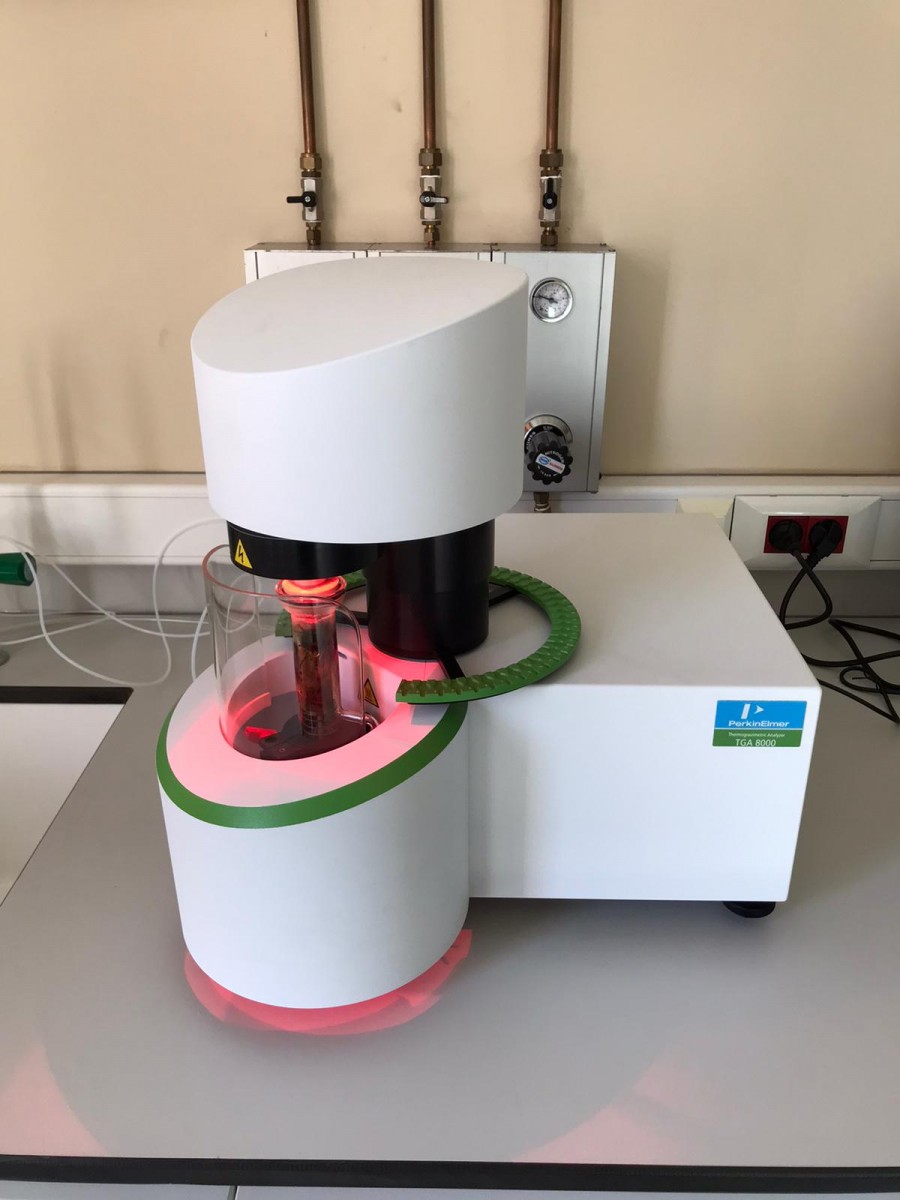 |
Working Principle:
Thermal gravimetric analysis is generally used to determine the mass loss in materials with increasing temperature or over time at a specific temperature. The temperature range is from room temperature to 1200°C, and the analysis is conducted with nitrogen gas at a temperature increase rate determined according to the sample. |
||
| Applications: Organic materials, inorganic materials, polymers Sample Acceptance Conditions: A sample quantity of 1mg-10mg is required. |
|||
| Instrument: Dinamik Mekanik Analiz Cihazı Brand / Model: Perkin ELMER DMA 8000 | |||
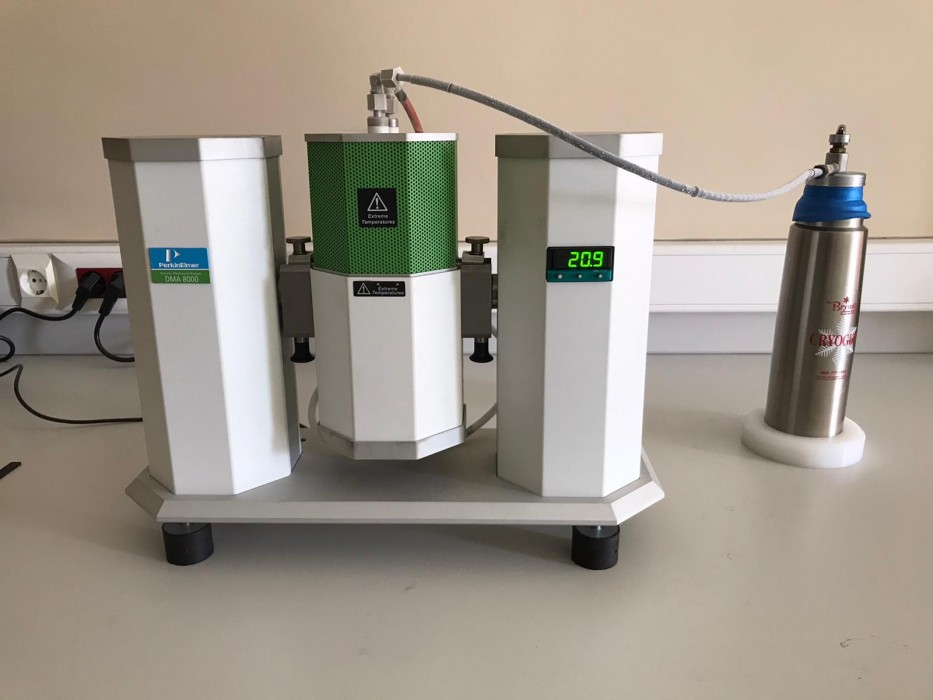 |
Working Principle:
DMA measures the viscoelastic properties of a sample by applying a specific frequency of force through the force arm to the material. When a load is applied to a material, deformation occurs. If the material is an ideal elastic material, the deformation disappears when the load is removed. Elastic deformation is directly proportional to the applied load and occurs immediately. However, in materials like polymers, deformation is non-linear and occurs with a delay. Viscous behavior is the opposite of elastic behavior. In an ideal viscous material, the rate of deformation is directly proportional to the applied load. Some materials, such as polymers, exhibit both elastic and viscous behavior and are called viscoelastic materials. DMA records temperature-dependent viscoelastic properties and determines the elastic modulus and damping coefficient by applying a controlled force to the sample. The analysis provides data such as glass transition temperature, storage modulus, and tan delta. Various analysis modes are performed, including Tension, Compression, 3-Point Bending, Shear, Single Cantilever, Dual Cantilever, and more. |
||
| Applications: Polymers and composite materials Sample Acceptance Conditions: Consult with an expert regarding sample sizes. |
|||
| Instrument: Inductively Coupled Plasma Optical Emission spectroscopy (ICP-OES) Brand / Model: ICP-OES PerkinElmer Optima 8000 | |||
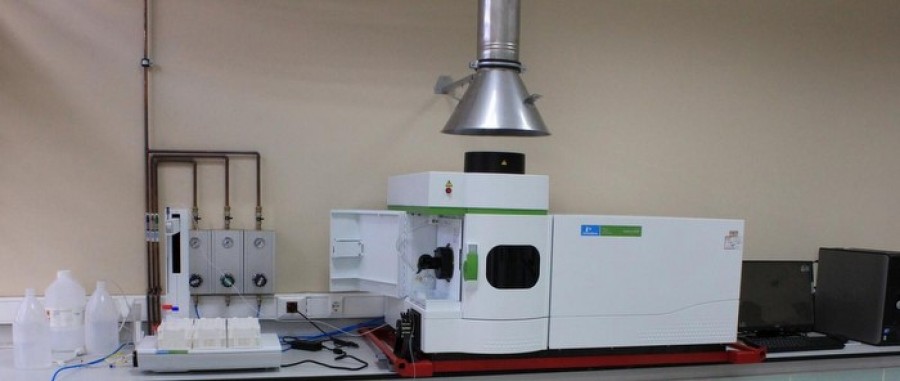 |
Working Principle:
Inductively Coupled Plasma-Optical Emission Spectroscopy (ICP-OES) operates with the Perkin Elmer axial-radial model serving as the plasma source atomizer, utilizing Argon gas as the plasma source. Plasma is defined as a medium composed of cations and electrons that conduct electric current, also described as a gaseous ion flow. The plasma carries no net external charge, meaning the sum of negative charges is approximately equal to the sum of positive charges. Cations in the plasma are comprised of various species. For example, in an argon plasma, there are argon cations, electrons, and cations originating from vaporized atoms in the sample under analysis. The quantity of cations from vaporized sample atoms is generally less than that of argon cations and electrons. To maintain a stable plasma, argon cations absorb energy to sustain the temperature of the environment at approximately 10,000 Kelvin. This temperature level is crucial for achieving the required ionization for a stable plasma. In sample preparation, the sample is nebulized within an argon flow using a nebulizer, and the resulting very tiny droplets are transported to the plasma through a spray chamber. This ensures effective atomization of the sample. The emission spectra unique to each element are passed through a dispersing spectrometer, and their intensities are monitored at their specific wavelengths using a light-sensitive CCD detector. This data is processed and controlled by a computer system. |
||
| Applications:
It is a fast technique that allows the simultaneous analysis of approximately 17 elements at trace, minor, and major concentration levels. It enables precise quantitative analysis, qualitative examination, and rapid measurement of trace elements in liquids. The determination of elements in the sample can range from parts per billion (ppb) to percentage (%). **Sample Types:** **Measured Elements:** |
|||
| Instrument: Microvawe Digestion System Brand / Model: CEM/ MARS 2 | |||
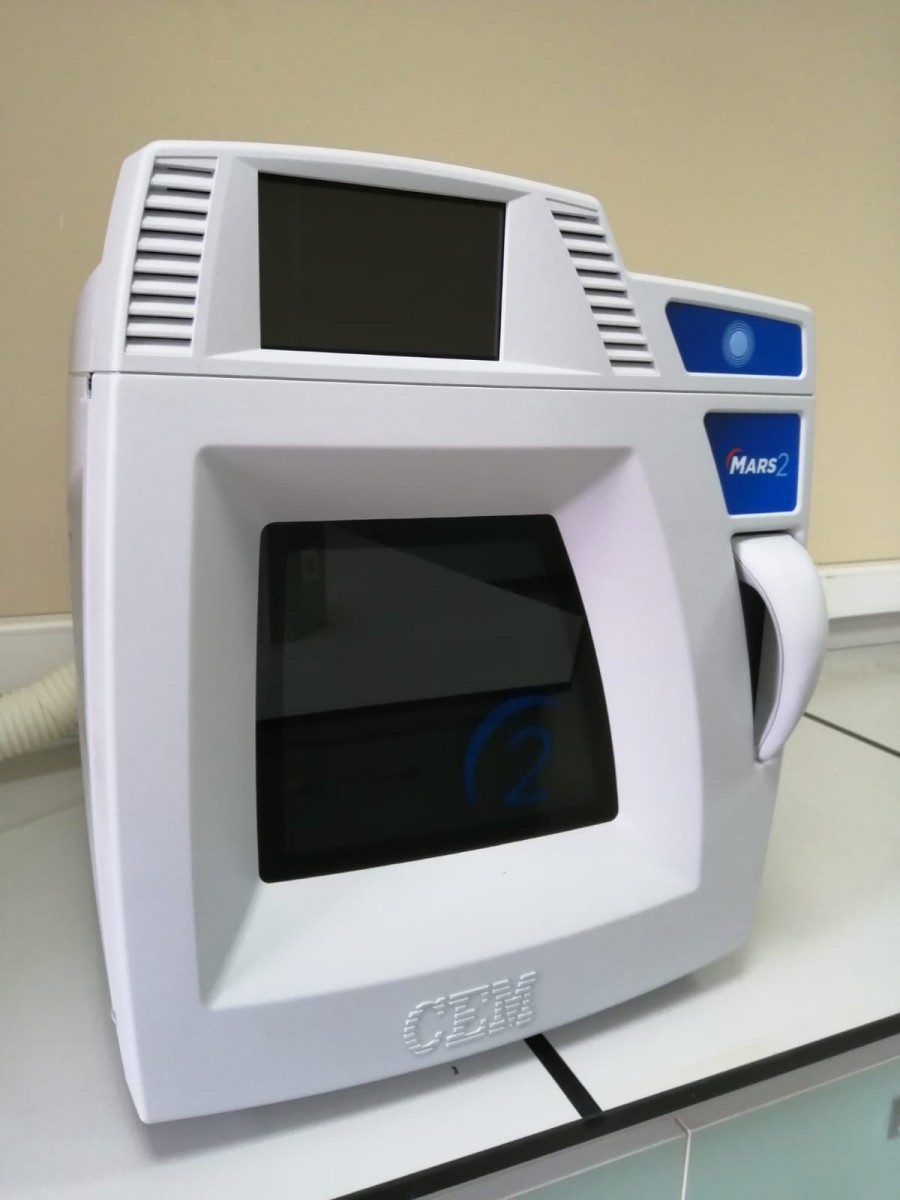 |
Working Principle: The microwave digestion process is a common technique used to convert metals present in organic molecules into the liquid phase before ICP-OES analysis. This process is achieved within a pressure- and heat-resistant closed vessel by subjecting the sample to strong acid and/or acid mixture while increasing pressure and temperature through microwave irradiation. After this process, the metal content can be analyzed using an ICP-OES device. |
||
| Applications: This system is suitable for the analysis of samples used in environmental, food, agricultural, and similar fields. Sample Acceptance Conditions: - Solid samples should be dried and ground beforehand. - For solid samples, the minimum sample quantity should be between 2-5 grams. |
|||